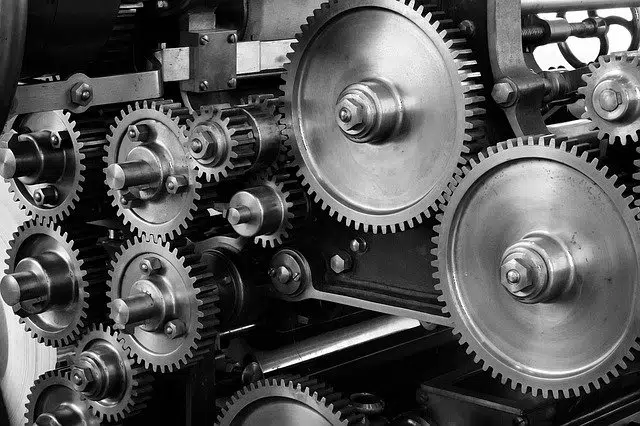
The set of moving components of a machine is known as a mechanism.
The concept of mechanism has its origin in the Latin term mechanisma and refers to the totality formed by the various components of a machine and which are in the proper arrangement for its proper functioning.
In machines , a mechanism is the grouping of components that are mobile and linked together through various types of joints; this allows said structure to transmit forces and movements. The mechanism is responsible for allowing said transmission.
Some examples where the term appears: "I don't understand the mechanism of this machine: why doesn't it work properly?" , "I need to buy some parts to repair the clock mechanism."
Components of a mechanism
For a mechanism to be considered as such, it is necessary that it is made up of a series of components , which are: link (rigid element that transmits movement from one place to another, essential for the mechanism to be activated), node (unifies two links with each other so that movement is communicated through it) and joint , also known as kinematic pair , (allows link and node to function correctly, indicating the union between the different links as parts of a whole).
Mechanisms can be classified according to many variables:
*According to the number of links, they can be binary , ternary or quaternary.
*According to the function they can be fixed , conductors , transducers or driven .
*According to the movement they cause, they can be fixed , crank , connecting rod or sliding .
On the other hand, with respect to the nodes, depending on which ones are used in the structure, the type of mechanism will vary because the movement will be diverse. In the case of the crank, for example, the movement it performs is rotary , while the movement performed by a mechanism with a slide is translational .

The idea of mechanism can be associated with operation.
Other uses of the term
But a mechanism does not only refer to a physical and solid structure that allows a movement to be carried out in a continuous manner, causing chain consequences. The dictionary of the Royal Spanish Academy adds that the notion can refer to the structural composition of a body (which can be both natural and artificial) and to the way in which the parts that constitute it are combined.
Sometimes the term can refer to something abstract , as is the case of defense mechanisms . The latter is a concept used in psychology to express those cognitive actions that develop in a person's life to defend themselves from possible external dangers. For example, those people who have suffered sexual abuse may possibly as adults tend to boycott any situation in which they may be involved in a sexual act or in which they feel sexually desired.
The mechanism as a means or methodology
Mechanisms are also known as those means used in the arts to carry out a social movement that generates change, or the phases that occur within the framework of a certain procedure.
In colloquial language , the notion of mechanism is used with reference to a methodology or a functioning . In this sense, mechanisms can be physical or abstract and refer to real or symbolic issues.
The manager of a company , therefore, can ask the employee who made him a proposal about the launch of a new product what mechanism he thought of to achieve the introduction of the novelty in the market. The coach of a football team, for his part, can design various defense mechanisms to contain the attacks of the rival.
